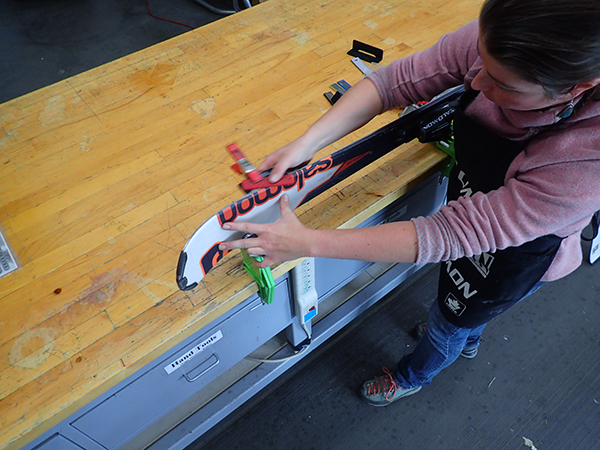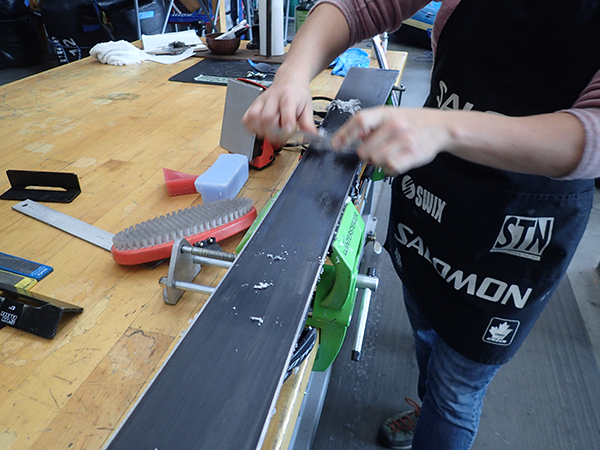Tuning means something different to every skier or snowboarder, but the basic idea is the same: boards should ride better after a tune up. This could mean the appropriate wax for the conditions or a full grind on the bases and core shots filled in. A good ski shop can do almost anything you need to get your boards into winter shape—but there are several things you can do yourself to keep your skis or snowboard in good condition for years to come.
Limit Preventable Damage
Prevention is the best medicine. The best tuner can’t turn back time and add more base material or metal. I am not going to tell you to stop riding the trees, just don’t ski through the parking lot. Asphalt leaves distinctive scratch marks on your bases that every ski technician recognizes. Stop whacking your skis together on the chair lift, it destroys your top sheet. Don’t store your skis in the garage, the skis absorb the moisture from the concrete leading to rusty edges and the base material delaminating. Finally, after your awesome day on the mountain, bring your riding implements inside to fully dry. It’s important that your boards don’t go through a freeze/thaw cycle where water gets between the bindings and skis or board. This ultimately leads to your wood core rotting and the binding screws stripping out.

Deburr Those Edges
Deburr your metal edges with a stone. I prefer to use a medium grit diamond stone. Lubricate the stone with water and run it up and down flush to the side and then bottom edge until it glides smoothly and your edges are rust free, then wipe clean. This will extend the time between edge sharpening, which takes off more material from your edges and shortens the lifespan of your boards.
Wax Your Bases
Wax your skis anytime there is a drastic change in snow conditions or your bases start to turn grey/white. Snow is abrasive and wax helps add a layer of protection and glide between the bases and snow. Since there are so many different types of snow conditions, there are an equal number of types of waxes. Wax types generally follow the rainbow spectrum—yellow is for the warmest spring conditions and green is for the brutal cold. Make sure to clean your bases before you wax them. To apply the wax, use an iron at the appropriate temp noted on the packaging to melt the wax—too hot and you change the chemical composite of the wax, too cold and your wax won’t absorb into the base of your skis. Wait for the wax to cool, and scrape with a sharp plastic scraper. Finally, use a brush to get rid of any excess wax. This opens up the structure of the base to combat any suction between your skis and the snow. Waxing can be a messy and time-consuming process, but many find it meditative and the instant gratification can’t be beat.

Know When to See a Professional
You should get your alpine ski bindings tested once a year and after a major crash to make sure that the binding is working properly. Get a full tune up as needed; this includes filling in scratches, grinding the bases flat, adding structure, edge sharpening, and wax. Don’t be surprised if a shop quotes you $30-$60 for a tune, it’s a lot of work to get your skis back in fighting shape. Every ski technician tunes a little differently; ask questions and shop around. Find one that listens to you and can tune the ski to where and when you ski, and to your style of skiing. I personally get a full tune at the end of the season and a layer of summer wax. When the snow comes again all I have to do is scrape and brush, then I am off to the hills! // (Sandra Townsend)













